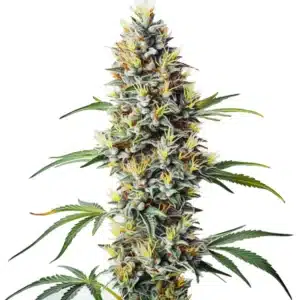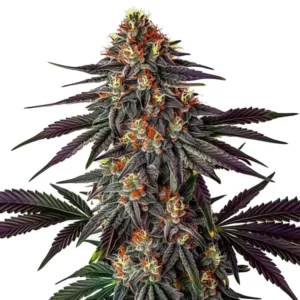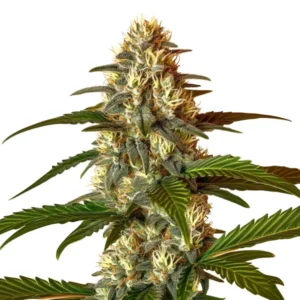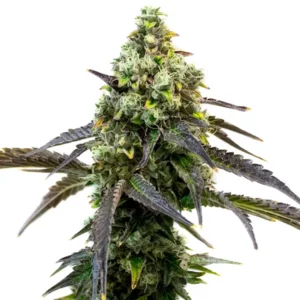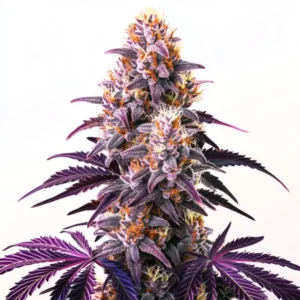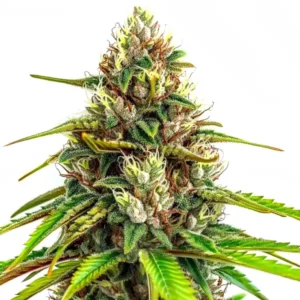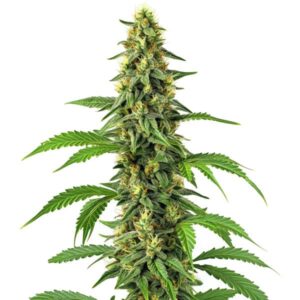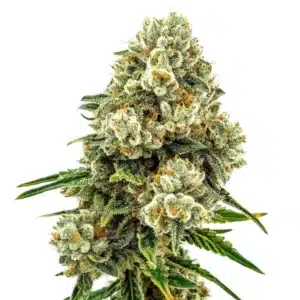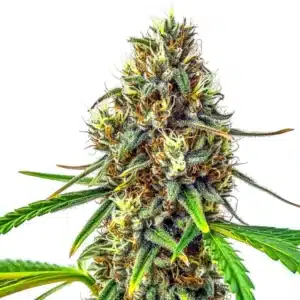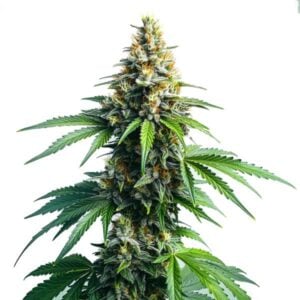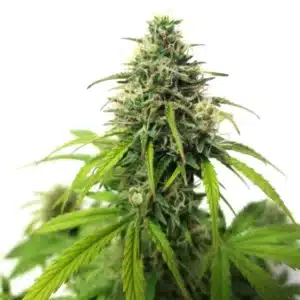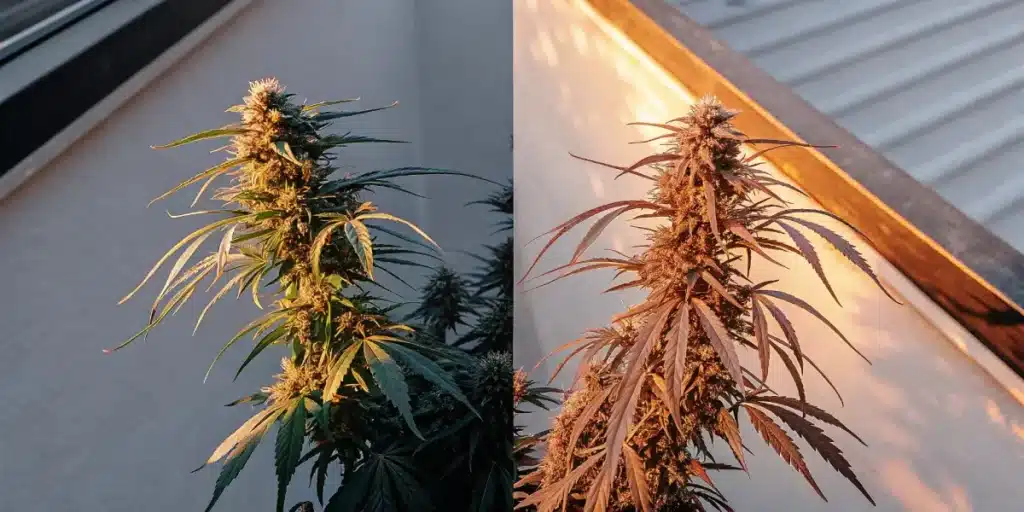
Mobile vs Immobile Nutrients in Cannabis
Growing cannabis is both an art and a science. One of the critical aspects of this process is knowing how nutrients work in your plants. Knowing mobile vs immobile nutrients in cannabis and their distinct roles can significantly impact your cultivation success.
Nutrients are essential for the growth of cannabis plants. They help in everything from root development to flowering. The differences between mobile and immobile nutrients in cannabis are vital for diagnosing and treating deficiencies effectively. Whether you’re a first-time cannabis seed buyer or an experienced grower, this knowledge can enhance your growing game.
Recommended Strains
Blue Amnesia Auto
-
THC: 17% - 18%
-
Type of seed: Autoflowering
-
Phenotype: 60% Sativa / 40% Indica
-
Flavor: Herbal, Sweet
-
Life cycle of: 8 - 10 weeks
Blue Amnesia Regular
-
THC: 22% - 24%
-
Type of seed: Regular
-
Phenotype: 70% Sativa / 30% Indica
-
Flavor: Citrus, Spicy, Sweet
-
Day to flower: 8 - 10 weeks
To grasp the concept of mobile vs immobile nutrients in cannabis, think about how nutrients move within the plant. Mobile nutrients can relocate from one part of the plant to another when needed. In contrast, immobile nutrients remain fixed in place once absorbed by the plant. This distinction affects how deficiencies manifest and how you should address them.
Mobile Nutrients in Cannabis
Mobile nutrients, like nitrogen, phosphorus, and potassium, move easily within cannabis plants. They travel from older leaves to new growth when the plant needs them. This ability makes it easier for the plant to prioritize new growth.
When mobile nutrient deficiency symptoms in cannabis appear, they typically show up in older leaves first. If you notice yellowing or wilting in these leaves, it might be due to a lack of mobile nutrients. Addressing these signs early can prevent them from affecting the entire plant.
The effects of mobile vs immobile nutrients on cannabis growth are evident when you consider how plants adapt to their environment. Mobile nutrients help plants respond quickly to changes, ensuring that new shoots receive the nutrients they need to develop robustly. This dynamic movement is crucial during the vegetative stage when rapid growth is essential.
Additionally, mobile nutrients are vital during periods of nutrient stress. When external conditions limit nutrient availability, the plant’s ability to redistribute resources can mean the difference between thriving and struggling. Knowing the funciton of mobile nutrients helps growers strategize effective feeding schedules to maximize plant health and yield.
Promos & Deals
Immobile Nutrients in Cannabis
Immobile nutrients, such as calcium, sulfur, and iron, don’t move once they’re in the plant. These nutrients remain in the tissues where they were initially absorbed, which means deficiencies appear in new growth first.
Immobile nutrient uptake in cannabis plants can be tricky. Since they can’t move to new areas, ensuring a consistent supply is crucial. New leaves showing signs of deficiency, like chlorosis or stunted growth, often point to a lack of immobile nutrients. Prompt intervention is necessary to maintain plant health.
Immobile nutrients play a foundational role in the structural integrity of cannabis plants. Their presence ensures that cell walls are strong, which supports overall plant stability and resilience. This stability is particularly important during flowering when the plant bears the weight of its buds.
Furthermore, immobile nutrients are crucial for certain metabolic processes. For example, calcium is integral to root development and iron is vital for chlorophyll production. A deficiency in these immobile nutrients can lead to long-term issues that affect the plant’s ability to photosynthesize and absorb water efficiently.
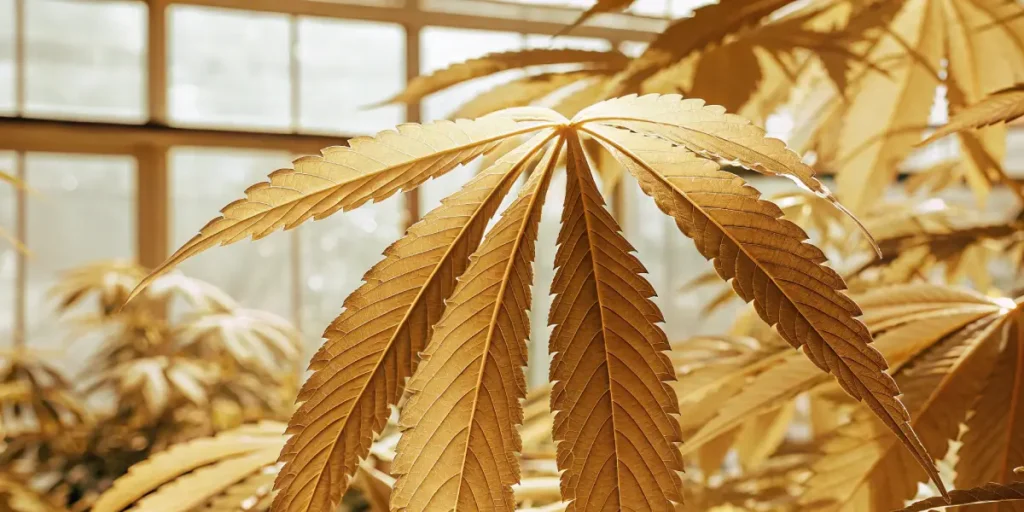
Effects of Mobile vs Immobile Nutrients on Cannabis Growth
The effects of mobile vs immobile nutrients on cannabis growth are profound. Mobile nutrients support overall vitality by reallocating resources to new growth. This flexibility helps plants adapt to environmental changes and stress.
Immobile nutrients, however, contribute to the structural stability of the plant. They are essential for building strong cell walls and maintaining consistent growth. Their presence ensures that cannabis plants can withstand physical stress and continue developing without interruption.
Both mobile and immobile nutrients have distinct impacts on different growth stages of cannabis plants. During the vegetative phase, mobile nutrients are crucial for developing a strong, leafy structure that can support future flowering. On the other hand, immobile nutrients ensure that the structural components of the plant remain robust and healthy.
In the flowering stage, the balance between these nutrients becomes even more critical. Mobile nutrients continue to support the rapid development of flowers, while immobile nutrients provide the stability needed for the plant to support its own weight. Growers must understand these dynamics to optimize their nutrient management strategies effectively.
Managing Nutrient Mobility in Cannabis Cultivation
Managing nutrient mobility in cannabis cultivation is about finding the right balance. Too much of one type can cause deficiencies in another, leading to poor plant health. Regular monitoring and adjustments are key.
One practical approach is using a balanced fertilizer that contains both mobile and immobile nutrients. Monitor your plants closely for signs of deficiency and adjust your feeding schedule accordingly. Remember, it’s easier to prevent nutrient problems than to fix them.
Effective management of nutrient mobility involves knowing the specific needs of your cannabis strains. Some strains may require higher levels of certain nutrients, making it essential to tailor your nutrient regimen accordingly. This approach not only prevents deficiencies but also optimizes the plant’s overall health and vigor.
Additionally, managing nutrient mobility in cannabis cultivation can involve using techniques like foliar feeding or adjusting soil pH. These methods can enhance nutrient uptake and ensure that both mobile and immobile nutrients are available in the right proportions, leading to healthier plants and better yields.
Popular Cannabis Strains and Their Nutrient Needs
Different cannabis strains have unique nutrient needs. Knowing these can help you tailor your nutrient management strategies. For instance, Blue Dream is known for its resilience but requires a careful balance of mobile and immobile nutrients to achieve its full potential.
Strains like Bruce Banner benefit from high nitrogen levels during the vegetative stage. This mobile nutrient supports the plant’s rapid growth phase, helping it develop its iconic, robust structure. However, don’t neglect the immobile nutrients, as they’re essential for flowering.
Girl Scout Cookies, on the other hand, needs a steady supply of calcium and magnesium. These immobile nutrients support the strain’s dense bud formation and enhance its flavor profile. Managing these nutrients ensures that your plants thrive and produce top-quality flowers.
Knowing the differences between mobile and immobile nutrients in cannabis can help you cultivate strains like Girl Scout Cookies more effectively. By ensuring an adequate supply of both nutrient types, you can enhance the plant’s growth potential and maximize its yield.
Furthermore, the effects of mobile vs immobile nutrients on cannabis growth highlight the importance of strain-specific nutrient management. By catering to the unique nutrient needs of each strain, growers can optimize their cultivation process and improve the overall quality of their harvest.

FAQs
What are mobile and immobile nutrients in cannabis?
Mobile nutrients are those that can move within the cannabis plant to areas where they are needed the most. Examples include nitrogen, phosphorus, and potassium. These nutrients typically travel from older leaves to newer ones, providing crucial support for rapid growth and development.
Immobile nutrients, such as calcium and iron, stay in the place where they were first absorbed. They can’t move to new growth areas, which means deficiencies often manifest in newer leaves. Ensuring a consistent supply of these nutrients is essential for maintaining healthy cannabis plants.
The differences between mobile and immobile nutrients in cannabis lie in their movement capabilities. This fundamental distinction affects how deficiencies manifest and the strategies needed to address them. By Knowing these differences, growers can develop more effective nutrient management plans.
Moreover, the interplay between mobile and immobile nutrients highlights the need for balanced fertilization. Providing both nutrient types in appropriate amounts can prevent imbalances and ensure robust plant development throughout the growth cycle.
How do nutrient deficiencies manifest in cannabis plants?
Nutrient deficiencies in cannabis plants show up in different ways depending on the type of nutrient. Mobile nutrient deficiency symptoms in cannabis typically appear in older leaves first. You might notice yellowing or wilting as the plant reallocates resources to new growth.
With immobile nutrients, deficiencies show up in the new growth. Look for signs like pale or discolored new leaves, which indicate a lack of essential nutrients. Addressing these issues quickly can prevent further damage and support healthy plant development.
The manifestations of nutrient deficiencies can be subtle or pronounced, depending on the severity and duration of the deficiency. Growers need to be vigilant in observing their plants for any signs of stress or abnormal growth patterns.
Regular monitoring and early intervention are crucial to managing nutrient deficiencies effectively. By knowing the symptoms associated with mobile vs immobile nutrients in cannabis, growers can take timely action to correct deficiencies and maintain optimal plant health.
How can I manage nutrient mobility in my cannabis cultivation?
Managing nutrient mobility involves balancing your nutrient supply to prevent deficiencies. Use a well-rounded fertilizer that includes both mobile and immobile nutrients. Monitor your plants regularly and adjust your feeding schedule based on their specific needs.
Consider the unique requirements of the strains you’re growing. Strains like Blue Dream and Bruce Banner have distinct nutrient profiles that influence how you should manage their growth. Tailoring your approach to each strain can result in better yields and healthier plants.
Managing nutrient mobility in cannabis cultivation also involves knowing the environmental factors that affect nutrient uptake. Factors such as soil pH, temperature, and humidity can influence how nutrients are absorbed and utilized by the plant.
By optimizing these environmental conditions, growers can enhance the efficiency of nutrient uptake and ensure that both mobile and immobile nutrients are available in the right quantities. This holistic approach to nutrient management can lead to healthier plants and higher-quality yields.
What are the differences between mobile and immobile nutrients in cannabis?
The differences between mobile and immobile nutrients in cannabis lie in their movement within the plant. Mobile nutrients can move from older leaves to newer ones, aiding in growth and adaptation to changing conditions. This mobility helps the plant prioritize new growth areas.
Immobile nutrients cannot move once absorbed, remaining fixed in the tissues. They are crucial for structural integrity and consistent growth. Deficiencies in these nutrients often appear in new leaves, requiring a steady supply to prevent issues.
Knowing the effects of mobile vs immobile nutrients on cannabis growth is essential for developing effective nutrient management strategies. The right balance of these nutrients can support optimal growth and prevent common deficiencies.
Furthermore, recognizing the differences between mobile and immobile nutrients in cannabis helps growers make informed decisions about fertilization and nutrient supplementation. This knowledge is key to achieving successful cultivation outcomes and maximizing the potential of your cannabis plants.
Can nutrient imbalances affect cannabis growth?
Yes, nutrient imbalances can significantly affect cannabis growth. An excess or deficiency of mobile or immobile nutrients can lead to poor plant health, reduced yields, and lower potency. Identifying and addressing these imbalances promptly is crucial for successful cultivation.
Regular monitoring and adjustments are necessary to maintain the right nutrient balance. Growers often use soil tests and visual checks to ensure their plants receive the right nutrients at the right time. This approach helps prevent problems and supports robust plant development.
Nutrient imbalances can also result from improper fertilization practices or environmental conditions that affect nutrient availability. Knowing the factors that contribute to these imbalances is essential for developing effective solutions.
By proactively managing nutrient mobility in cannabis cultivation, growers can prevent imbalances and optimize their nutrient regimens. This proactive approach can lead to healthier plants, higher yields, and a more successful cultivation experience overall.


